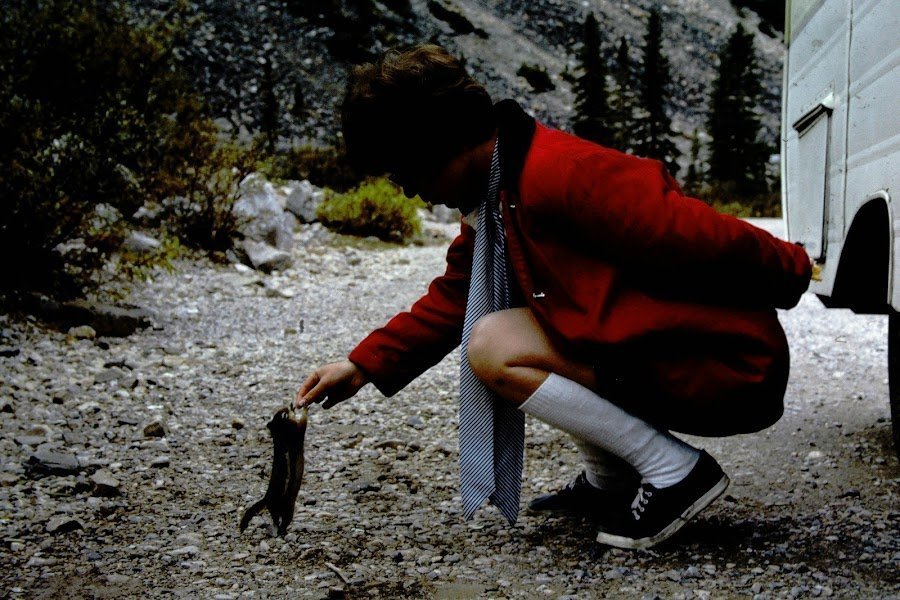Glacier National Park, renowned for its stunning landscapes and diverse ecosystems, can be experienced with fewer crowds during specific times and in certain areas. This guide provides comprehensive information on the least crowded periods, trails, and locations within the park, along with strategies to avoid the busiest times and places. By planning your visit strategically, you can enjoy the park’s natural beauty in relative solitude.
When is Glacier National Park Least Crowded?

Glacier National Park experiences varying levels of visitation throughout the year. Understanding these patterns can help you plan a visit with fewer crowds.
What are the Least Crowded Months to Visit?
The least crowded months to visit Glacier National Park are typically the shoulder and off-season periods:
- April and May
- Significantly fewer visitors compared to summer
- Cool and unpredictable weather
- Some trails may still be closed due to snow
-
May 2023 saw about 434,000 visitors, lower than peak summer months
-
September and October
- Drop in visitor numbers after peak summer season
- September 2023 had 602,339 visits, busy but less crowded than summer
- Mild temperatures and fewer crowds
-
Some facilities may start closing for the season
-
November to March
- Least crowded months of the year
- Cold temperatures and snow
- Many road and trail closures
- Significantly reduced visitor numbers
What are the Best Times of Day to Avoid Crowds?
To minimize encounters with other visitors:
- Visit popular areas early in the morning (before 8 AM)
- Explore in the late afternoon or evening (after 4 PM)
- Take advantage of the vehicle reservation system’s flexibility after 3 PM
Where are the Least Crowded Areas in Glacier National Park?

Which Trails are Least Crowded?
- Belly River Trail
- Length: Approximately 12 miles round trip
- Difficulty: Moderate to strenuous
- Average hiking time: 6-8 hours
-
Scenic views and access to remote areas
-
Kintla Lake Trail
- Length: Approximately 14 miles round trip
- Difficulty: Moderate
- Average hiking time: 7-9 hours
-
Less frequented than Going-to-the-Sun Road corridor trails
-
Bowman Lake Trail
- Length: Various, depending on route
- Difficulty: Easy to moderate
- Average hiking time: 2-6 hours
- Located in one of the less visited areas of the park
What are the Best Quiet Spots for Solitude?
- Bowman Lake
- Located in the northwest part of the park
- Accessible via gravel road
- Amenities: Campground, boat launch, picnic areas
-
Known for its remote and less crowded environment
-
Kintla Lake
- Located in the northwest part of the park
- Accessible via gravel road
- Amenities: Campground and picnic areas
-
Serene and less crowded atmosphere
-
North Fork Area
- Located in the northwest part of the park
- Accessible via Inside North Fork Road
- Amenities: Campgrounds, picnic areas, hiking trails
- Less visited compared to Going-to-the-Sun Road corridor
How Can I Plan to Avoid Crowds at Glacier National Park?
What Strategies Can I Use to Minimize Crowd Encounters?
- Timing Your Visit
- Plan your trip during shoulder seasons (April-May or September-October)
- Visit popular areas early morning or late afternoon
-
Consider exploring the park during weekdays rather than weekends
-
Choosing Less Popular Areas
- Focus on the northwest section of the park (Bowman Lake, Kintla Lake)
- Explore the North Fork area for a more secluded experience
-
Opt for less-known trails like Belly River or Kintla Lake trails
-
Utilizing the Vehicle Reservation System
- Make reservations in advance for peak season visits (May-September)
- Take advantage of the system’s flexibility after 3 PM
- Have a backup plan in case your preferred area is at capacity
What Should I Know About Parking and Transportation?
- Parking Challenges
- Popular areas like Logan Pass and Avalanche Creek often have limited parking
- Arrive early (before 8 AM) to secure a spot at busy locations
-
Be prepared to spend time looking for parking or use alternative transportation
-
Shuttle System
- Utilize the park’s shuttle system to avoid parking issues
- Shuttles run frequently during peak season along Going-to-the-Sun Road
-
Check shuttle schedules and plan your day accordingly
-
Alternative Transportation
- Consider biking in the park (where permitted) to avoid vehicle congestion
- Join guided tours that provide transportation to popular areas
What Specific Regulations Should I Be Aware Of?
- Vehicle Reservation System
- Required for certain areas between May and September
- Make reservations well in advance through the official park website
-
Be aware of different reservation requirements for various park areas
-
Backcountry Permits
- Required for overnight backcountry camping
- Limited number available, obtain in advance when possible
-
Helps manage crowd levels in remote areas
-
Wildlife Safety Regulations
- Maintain safe distances from wildlife (100 yards for bears, 25 yards for other animals)
- Store food properly to avoid attracting wildlife
- Carry bear spray and know how to use it
What are Some Lesser-Known Facts About Glacier National Park’s Quiet Areas?
- Ecological Importance
- Less crowded areas often serve as critical habitats for sensitive species
-
The North Fork area is home to rare plant species and important wildlife corridors
-
Historical Significance
- Many quiet areas have rich cultural histories, including Native American usage and early explorer routes
-
The Belly River area was historically used by the Blackfeet tribe for hunting and gathering
-
Stargazing Opportunities
- Less crowded areas often offer better dark sky conditions for stargazing
- Bowman and Kintla Lakes are excellent spots for night sky observation
By following these guidelines and exploring the less crowded areas of Glacier National Park, visitors can experience the park’s natural wonders in a more peaceful and intimate setting. Remember to always practice Leave No Trace principles and respect the park’s regulations to preserve its beauty for future generations.
References:
1. https://flatheadbeacon.com/2023/11/04/glacier-parks-year-to-date-visitation-data-reveals-summertime-uptick/
2. https://www.nps.gov/glac/planyourvisit/crowds.htm
3. https://www.nps.gov/glac/learn/news/gnp-announces-2023-visitation-data.htm